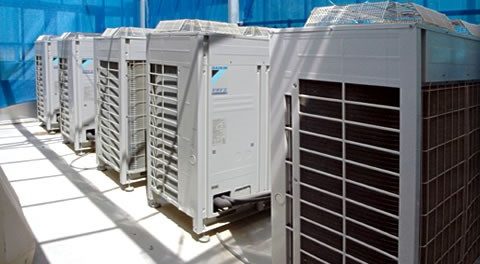
Rapid decarbonisation of electricity means that heat pumps are now serious contenders as a source of heat for many new developments. They can offer significant carbon reductions and air quality improvements over gas boilers or combined heat and power (CHP) if designed and installed well, and provide the option to provide cooling as well as heat. As with any technology, there are risks as well as rewards associated with the design and installation of heat pumps. This article will consider 3 key risks that must be addressed before adopting heat pumps as part of a heat network strategy.
- To operate efficiently (or at all), heat pumps require lower flow and return temperatures than are used on most existing heat networks.Early consideration of how to deliver hot water at temperatures sufficient to mitigate the risk of Legionella is crucial. Storage cylinders in dwellings, oversized heat exchangers and even chemical treatment are all options and are not without their own challenges, but simply doing what was done on the last project will not solve the problem. Heat pump-led networks will also lead to a preference for underfloor heating or fan coil units for space heating and a move away from radiators.
- Most heat pumps rely on the use of hydrofluorocarbons (HFCs) as a refrigerant. The EU is cutting the availability of HFCs by 79% between 2015 and 2030. This caused price increases in excess of 30% in 2018 alone, impacting the cost of supplying and operating heat pumps. The use of more environmentally friendly refrigerants can lead to plant size increases and increased flammability of the refrigerant charge. The impact of changing technology must be considered seriously in lifecycle costing and plant replacement strategies to ensure the system can be adapted in future.
- Heat pump systems cannot compete with gas fired systems on fuel costs with electricity currently 400% more expensive than gas. Whilst subsidy from the Renewable Heat Incentive (RHI) is currently available, the future of such funding is uncertain, so long-term planning is challenging. Supplying cost-competitive heat to customers using heat pumps is not therefore something that can be achieved in many cases. However, an increase in the price of gas relative to electricity could quickly make heat pumps look more attractive.
Policy and regulations are pushing heating strategies towards the use of heat pumps. Developers must not ignore this but consider the impacts on their businesses and customers seriously. We recommend that anyone considering the feasibility of a heat pump strategy undertakes early assessment of capital and running costs, plant replacement and maintenance strategies and resilience to fuel price fluctuations.
Posted on January 29th, 2019
Author: Matthew Bailey
Related services: Energy Statements, SAP (Domestic), Renewable Energy Feasibility Studies, Planning Policy & Zero Carbon, Masterplanning & Strategy,